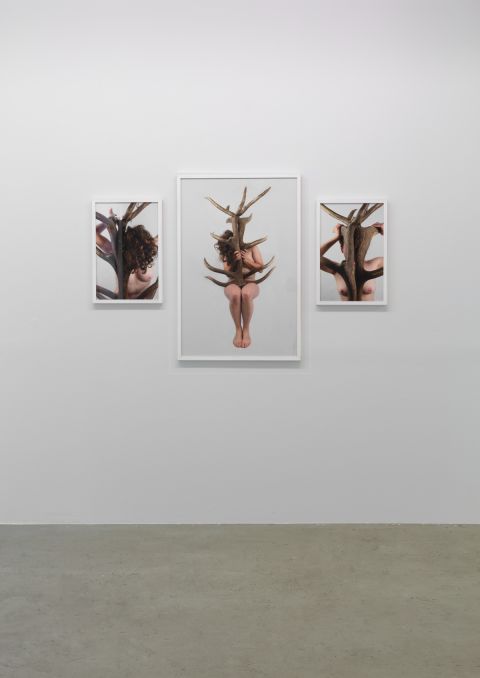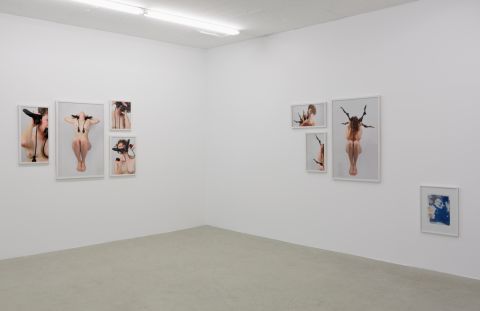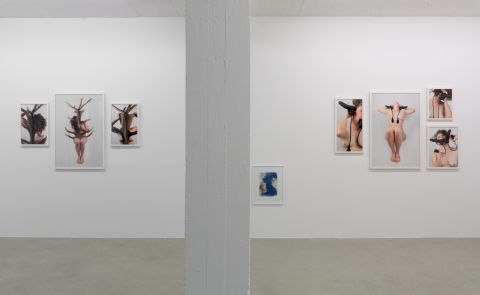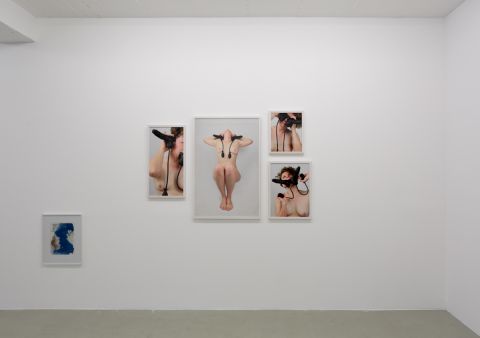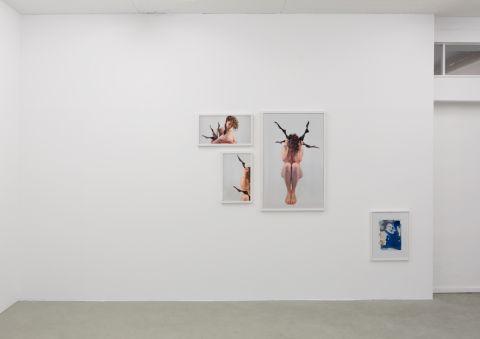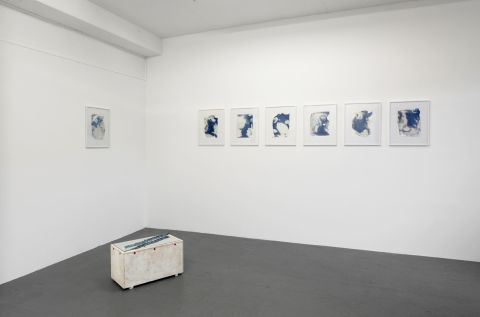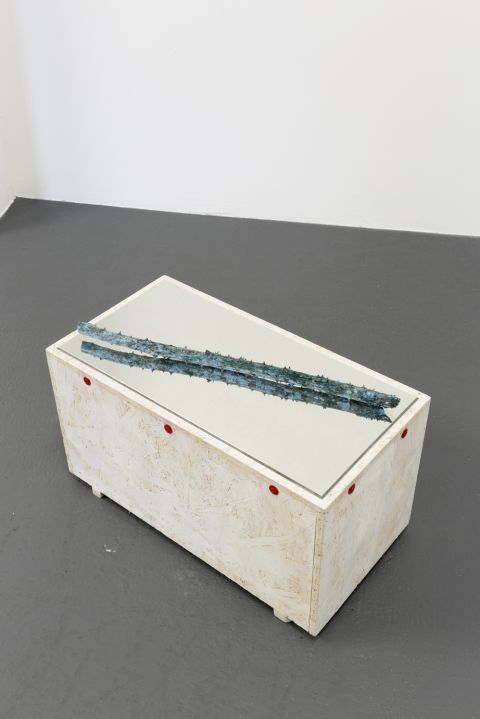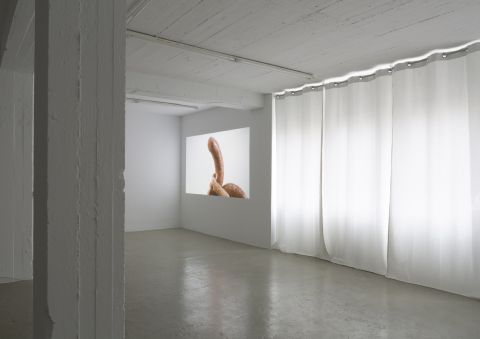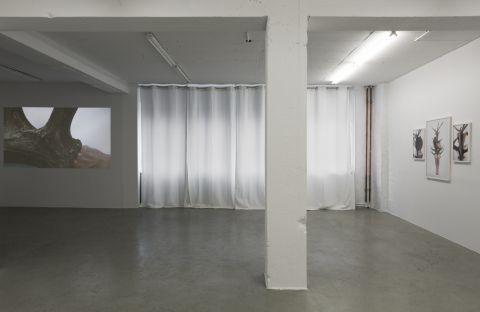Kein Bock, du Sünder!
in: Installation » 2021
Petra Martinetz Gallerie
08.07.2021 - 21.08.2021
Images by Tamara Lorenz
Evamaria Schaller, born in Graz, Austria, in 1980, lives in Cologne. She works in the fields of performance, video, installation and photography. Her exhibition Kein Bock, Du Sünder! deals with questions concerning the attribution of guilt, moral concepts, scope for possibility and justice within the framework of various series of works.
Lisa Klosterkötter: The scapegoat is a proxy, a screen that is used as a means of taking responsibility for the mistakes of others, a burden is placed on him/her, and he/she is held responsible for the actions of others.
Evamaria Schaller: The idea that a scapegoat is required when a community is torn apart or when it feels threatened by a catastrophe has been handed down from ancient Mesopotamia.
LK: This brings to mind Silvia Federici’s book ‘Caliban and the Witch’ (2012) and her classification of the systematic torture and murder of hundreds of thousands of women in the 16th and 17th centuries. She sees the organised extermination of women as an attack on their resistance to the spread of capitalist relations, and an attack on the power that women had acquired through their sexuality, their control over reproduction and their healing abilities.
EMS: The woman as sinner and scapegoat – the omnipresent search for the guilty party or parties formed important points of departure for this exhibition, as they also have a strong impact on me as an artist.
LK: Fragments of your body can be seen in most of the exhibited works. Are they self-portrayals or do you use your body more as a placeholder in order to project beyond it and to draw attention to specific issues?
EMS: Exactly, I use my body as a proxy in all of my work, most of the time my face is not even visible. In the exhibited photo series, I am dealing, among other things, with materiality, with the body and the carnal, the carnal lust of sin.
LK: Some of your works also portray veritable scapegoat attributes: animal antlers with male connotations, phallic representations, inflatable plastic dildos that are attached to your body like prostheses or modules and then staged together in front of the camera. I find it interesting how the female (artist’s) body combines with supposedly male characteristics to become the scapegoat figure. Conversely, the title is initially addressed to a man: you sinner!
EMS: I am really interested in transformative moments, how do I become an animal, or a man? How would I get rid of a penis or how would I get one in order to stand equally? Do I need to ‘acquire’ other attributes to be perceived differently? What are the transformation processes that we ourselves constantly enter into because it is demanded of us, or because we have the freedom to choose them for ourselves? For me, transformation is also related to questions of who is carrying something, bearing it and what is being passed on.
LK: With respect to the photographs, questions about transformed and shared guilt also surface in my mind. Does the body depicted in the images assume a sin, does it burden itself with guilt, or is guilt placed upon it? Both elements come together for me, the pictures possess something delightfully playful and at the same time also a dedicated weight. This makes me think of the “original sin”, the “unholy state” that was brought about by the fall of Adam and Eve and has been “burdening mankind” ever since.
EMS: Of course, for me, “sin” is generally a term with very Christian religious connotations. Having grown up Catholic and gone to a Catholic girls’ grammar school, sin was very much present in my youth. We used to compete in confession, we often went to the priest responsible and snorted things out of our noses. Sin as something cool. Then the scapegoat is not too far away.
